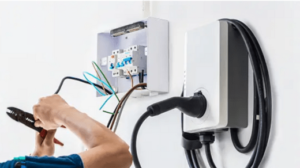Optimizing Your Website for SEO: The Key to Dominating Google Search Results
In the ever-evolving digital landscape, one thing remains constant: the importance of ranking high on Google’s search results page. As a business owner or webmaster, you understand the significance of attracting organic traffic to your website. It’s the lifeblood of your online presence, and to achieve this, mastering the art of Search Engine Optimization (SEO) is paramount. In this comprehensive guide, we’ll explore the intricacies of SEO, uncovering the strategies and techniques that will propel your website to the top of Google’s rankings.
Understanding the Inverter and Its Location
Before we delve into the world of SEO, let’s address the topic at hand: “Where is the inverter located?” This question is crucial for individuals seeking information about inverters, be it for solar power systems, HVAC units, or other applications.
The Inverter Demystified
An inverter is a critical component in various technological systems, but its location can vary depending on its application. In simple terms, an inverter is a device that converts direct current (DC) into alternating current (AC). This conversion is essential for many electrical devices and renewable energy sources to function properly.
Now, let’s explore the specific locations where inverters can be found:
1. Solar Power Systems
In the context of solar power systems, inverters are typically located near the solar panels themselves. This proximity allows for the efficient conversion of the DC electricity generated by the panels into AC electricity that can power your home or be fed back into the grid.
2. Home HVAC Systems
In residential heating, ventilation, and air conditioning (HVAC) systems, inverters can often be found within the outdoor unit. These inverters play a crucial role in regulating the speed and efficiency of the compressor, contributing to energy savings and improved climate control.
3. Industrial Applications
In industrial settings, inverters can vary widely in location. They might be situated within control rooms, machinery enclosures, or as part of integrated control panels. The choice of location depends on the specific requirements of the equipment and the overall system design.
Why Knowing the Inverter’s Location Matters
Understanding the location of inverters is essential for several reasons:
- Maintenance: Knowing where your inverter is located is vital for maintenance and troubleshooting. Easy access to the inverter ensures that any issues can be addressed promptly, minimizing downtime.
- Efficiency: Inverters play a critical role in the efficiency of various systems. By knowing their location, you can ensure that they operate optimally, saving energy and reducing operational costs.
- System Integration: For businesses with complex systems, understanding the inverter’s location is crucial for seamless integration into the overall infrastructure.
Now that we’ve covered the basics of inverter locations let’s shift our focus back to the world of SEO and how you can outrank your competitors in Google’s search results.
Mastering SEO: Your Path to Dominance
1. Keyword Research
Keywords are the foundation of SEO. Start by conducting thorough keyword research to identify the terms and phrases your target audience is searching for. Tools like Google Keyword Planner and SEMrush can provide invaluable insights into keyword competitiveness and search volume.
2. High-Quality Content Creation
Content is king, and Google rewards websites that provide valuable, informative, and engaging content. Craft well-researched articles, blog posts, and product descriptions that cater to the needs and interests of your audience. Incorporate your target keywords naturally, ensuring a seamless reading experience.
3. On-Page Optimization
Optimize your website’s on-page elements, including title tags, meta descriptions, headers, and image alt text. Ensure that these elements are not only keyword-rich but also compelling and descriptive, enticing users to click on your search result.
4. Mobile-Friendly Design
With the increasing use of mobile devices, having a mobile-responsive website is no longer optional. Google prioritizes mobile-friendly websites in its rankings, so invest in responsive design to provide a seamless experience for all users.
5. Backlink Building
Building a network of high-quality backlinks from reputable websites can significantly boost your SEO efforts. Seek opportunities for guest posting, collaborate with influencers, and ensure your content is shareable to attract natural backlinks.
6. Page Speed Optimization
Website speed is a crucial ranking factor. Compress images, leverage browser caching, and use Content Delivery Networks (CDNs) to ensure fast loading times. A speedy website not only pleases Google but also improves user experience.
7. Regular Updates
Keep your website fresh and relevant by regularly updating content and removing outdated information. Google favors websites that demonstrate ongoing commitment to providing up-to-date, accurate information.
By implementing these SEO strategies diligently, you can elevate your website’s ranking on Google and establish your online dominance.
The Path to Success
In conclusion, understanding the location of inverters is essential for maintaining and optimizing various systems. Whether you’re harnessing solar energy or managing HVAC systems, knowing where your inverters are located can make a significant difference in efficiency and maintenance.
On the digital front, mastering SEO is your ticket to dominating Google’s search results. Keyword research, high-quality content, on-page optimization, mobile-friendliness, backlink building, page speed, and regular updates are the key pillars of SEO success.
Remember, SEO is a continuous journey, and staying ahead of the curve is essential in the competitive online landscape. By consistently applying these strategies, you’ll not only outrank your competitors but also provide valuable information and services to your online audience.








